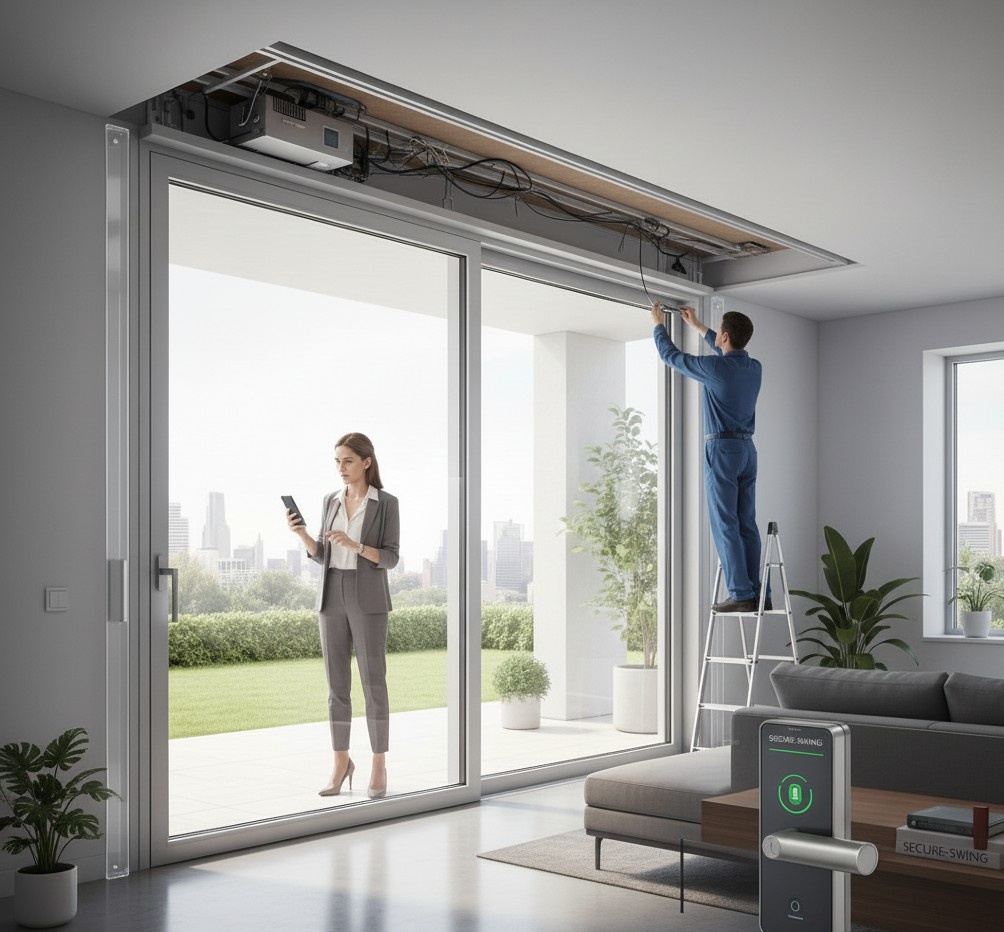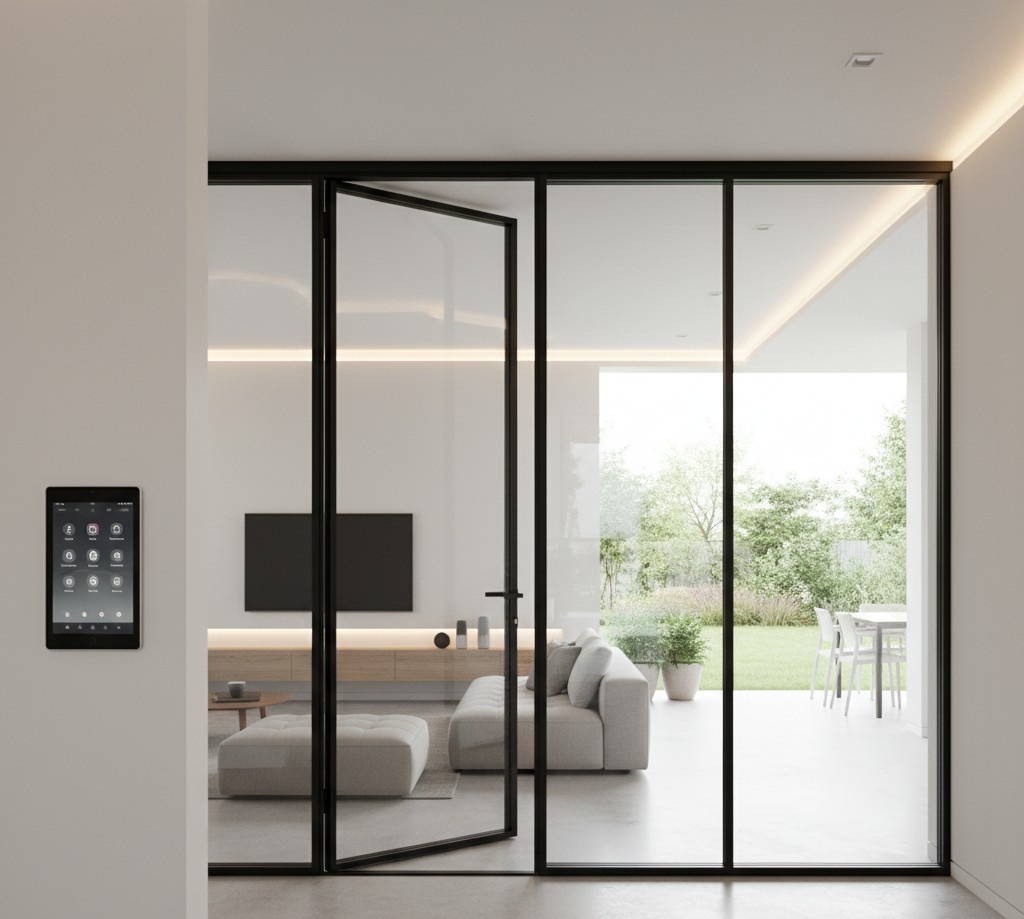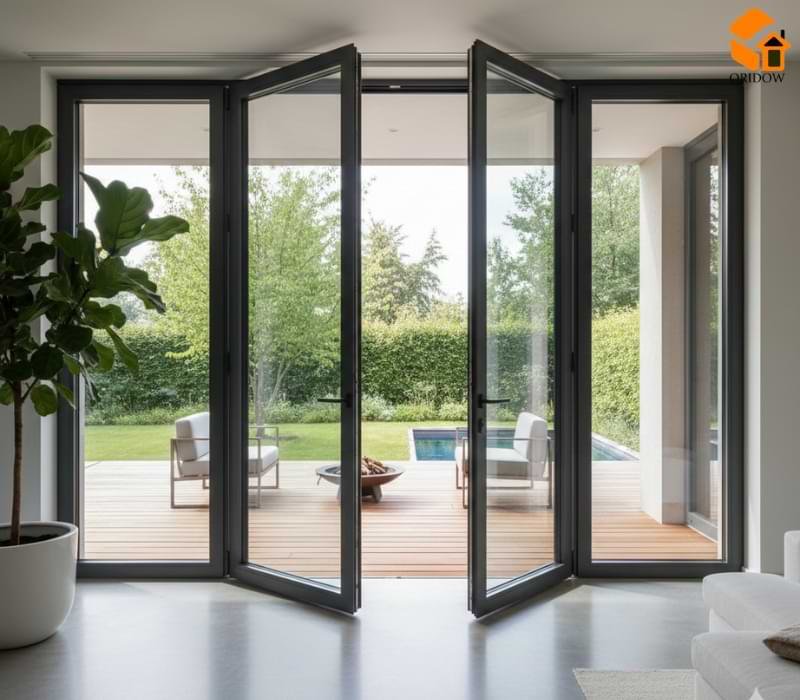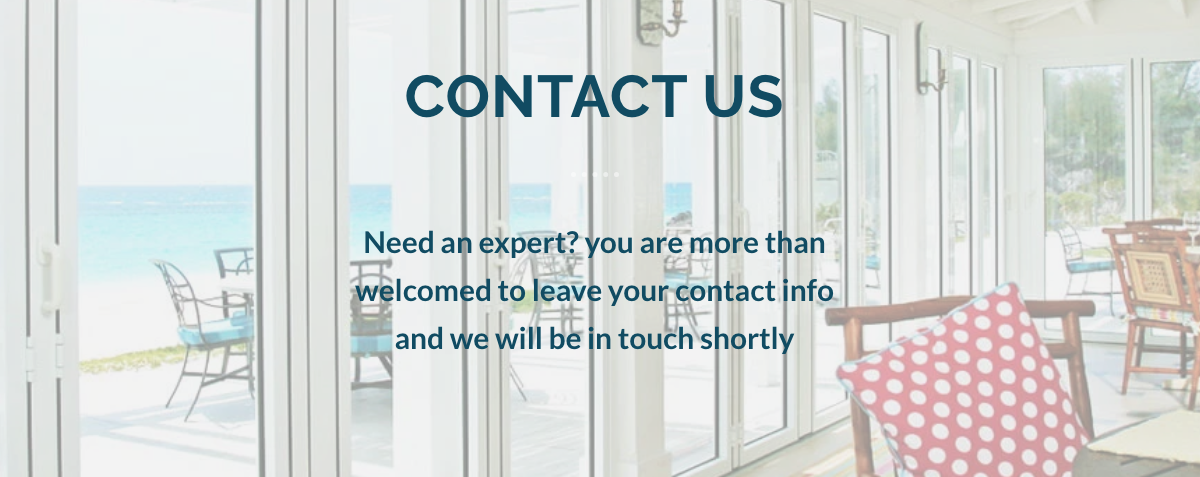Smart home technology has moved far beyond lighting and thermostats. Increasingly, doors and windows are central to creating secure, energy-efficient, and convenient living environments. Among the most innovative options, the swing sliding door offers a combination of flexibility, space optimization, and modern design. Its ability to integrate with automation platforms makes it a valuable choice for builders, architects, and distributors involved in residential and commercial projects.
Key Takeaways:
- Swing sliding doors combine swing and sliding mechanisms for flexible access, modern aesthetics, and smart home compatibility.
- Integration involves aluminum framing, smart locks, sensors, motorized tracks, and compatibility with platforms like Alexa or Google Home.
- Benefits include enhanced security, energy efficiency with smart glass, accessibility for all users, and customization for residential and commercial projects.
Understanding Swing Sliding Doors
What Makes Swing Sliding Doors Unique?
Unlike standard sliders, swing sliding doors merge the hinged motion of a traditional swing door with the track-based glide of a sliding system. This hybrid model is particularly useful for smart homes where space management and functionality are top priorities.
Key features include:
- Dual Access Modes: Swing open for immediate access or glide for space-saving.
- Architectural Appeal: Slim profiles, often achieved with aluminum doors, maximize glass area for natural light.
- Custom Options: Configurations, glazing types, and finishes can be tailored to suit project needs.
- Durability: Engineered for heavy use in residential and commercial environments.
Components of a Swing Sliding Door System
- Structural frame (aluminum or uPVC).
- Glass panels (laminated, double-glazed, or smart glass).
- Hinges and track systems for dual operation.
- Locking mechanisms (mechanical or smart-enabled).
- Seals and insulation layers for energy efficiency.
Why Swing Sliding Doors Are Ideal for Smart Homes?
Smart homes are designed around convenience, efficiency, connectivity, and seamless control, and modern swing sliding doors fit perfectly into this ecosystem. Unlike traditional hinged or basic sliding doors, swing sliding doors combine flexible movement with advanced hardware systems, making them highly compatible with smart home technologies and modern living expectations.
Let’s look at why swing sliding doors are increasingly considered an ideal choice for smart homes.
Seamless Integration with Smart Automation
Swing sliding doors work exceptionally well with automated and motorized systems. Their controlled movement and guided tracks allow smooth integration with smart home controllers.
-
Compatible with automated opening and closing mechanisms
-
Can be connected to smart home hubs (Alexa, Google Home, or app-based systems)
-
Supports scheduled operation and remote control
-
Ideal for hands-free use in connected homes
This makes daily operation more intuitive and aligned with smart living.
Enhanced Space Optimization for Smart Layouts
Smart homes focus on maximizing usable space, and swing sliding doors are designed to do exactly that.
-
Combine swinging and sliding motions to reduce door clearance needs
-
Allow larger openings without sacrificing interior space
-
Ideal for flexible floor plans and open-concept designs
-
Improve indoor–outdoor flow without bulky door panels
Efficient movement supports smarter spatial planning.
Superior Sealing and Energy Efficiency
Energy efficiency is a core principle of smart home design. Swing sliding doors typically provide better sealing than standard sliding doors, helping maintain indoor comfort.
-
Tight, compression seals reduce air leakage
-
Improved thermal and acoustic insulation
-
Lower heating and cooling energy usage
-
Supports smart climate control systems
Better sealing means smarter energy performance.
Smart Lock and Security Compatibility
Security is a major component of any smart home, and swing sliding doors support advanced locking technologies.
-
Compatible with smart locks and multi-point locking systems
-
Integration with home security and alarm systems
-
Remote lock/unlock functionality
-
Access monitoring and activity alerts
This transforms the door into an active security component rather than a passive entry point.
Improved Ventilation Control
Swing sliding doors allow precise control of opening size, which works perfectly with smart ventilation strategies.
-
Adjustable opening positions
-
Optimized airflow management
-
Can integrate with air-quality and weather sensors
-
Supports passive cooling and smart ventilation systems
This helps maintain comfort while reducing energy consumption.
Quiet, Smooth, and Sensor-Friendly Operation
Smart homes prioritize low-noise, smooth-operating systems. Swing sliding doors are engineered for controlled movement that works well with sensors and automation.
-
Smooth rollers and guided tracks
-
Reduced vibration and door slam risk
-
Reliable motion detection for safety sensors
-
Long-term operational stability
This reliability is critical for automated environments.
Future-Ready and Upgrade-Friendly Design
Perhaps most importantly, swing sliding doors are future-proof. Their modular hardware systems allow easy upgrades as smart technology evolves.
-
Supports future automation and hardware upgrades
-
Compatible with emerging smart home standards
-
Designed for long-term adaptability
-
Ideal for homeowners planning technology expansion
How to Integrate Swing Sliding Doors into Smart Systems?
Step 1: Selecting the Right Door System
The foundation of a smart-ready installation begins with choosing the right fenestration system. Large-scale projects often require products that meet international certifications, can be customized for design, and support heavy-duty smart hardware.
Step 2: Choosing Smart Hardware Components
Core devices include biometric locks, open/close sensors, motorized tracks, and access controls. Advanced features such as climate-responsive automation or switchable smart glass expand the functional range of these systems.
Step 3: Ensuring Platform Compatibility
When integrating doors into smart ecosystems, it is essential to check protocol compatibility (Wi-Fi, Zigbee, Z-Wave) and ensure interoperability with mainstream home automation platforms.
Step 4: Installation and Calibration
Successful integration depends heavily on expert installation. A clear installation guide can help builders and installers align structural support with automation hardware, ensuring long-term performance.

Common Challenges and Solutions
- Cost Concerns: High upfront investments can be managed by adopting modular smart components that allow gradual upgrades.
- Compatibility Issues: Always confirm IoT protocol support before purchase.
- Maintenance Needs: Tracks and hinges should be serviced periodically to prevent wear.
- Cybersecurity Risks: Keep firmware updated and networks secure to safeguard against breaches.
Swing Sliding Door vs. Traditional Smart Sliding Door
|
Feature |
Swing Sliding Door |
Traditional Sliding Door |
|
Functionality |
Dual: swing + slide | Slide-only |
| Space Use | Flexible for different layouts | Efficient in narrow spaces |
| Smart Integration | Locks, sensors, glass, security | Limited to track automation |
| Design Appeal | Contemporary, customizable |
Modern but less versatile |
For existing projects, it’s possible to convert a sliding door into a hybrid system, giving properties the benefits of both swing and sliding operations.
Applications Across Sectors
Residential Use
In residential settings, swing sliding doors are ideal for smart patio access, balcony openings, and flexible interior partitions. Homeowners benefit from smooth automation, child-safe sensors, and secure smart locking systems that enhance daily convenience while maintaining safety. These doors also support better natural light and indoor–outdoor connection, making them well suited to modern family homes.
Commercial Projects
For offices, retail spaces, and hospitality environments, swing sliding doors provide efficient access control without compromising design aesthetics. Their smooth operation, advanced locking options, and space-saving functionality improve user flow while maintaining a sleek, professional appearance. Integration with building management systems further enhances security and energy efficiency.
Developers and Large-Scale Projects
In multi-unit residential or mixed-use developments, swing sliding doors offer consistency and scalability. Bulk procurement of certified systems ensures uniform quality, reliable performance, and compliance across all units. These doors support faster installation and streamlined maintenance, making them a practical choice for large-scale projects.
Global Manufacturing and Customization Insights
Material Considerations
Aluminum remains a preferred material for swing sliding door systems due to its lightweight strength, corrosion resistance, and ability to support large glass panels. These properties make it ideal for both structural performance and modern architectural design.
Certification Standards
Meeting international safety, energy efficiency, and sustainability standards is essential for global projects. Certified door systems assure performance, fire resistance, and long-term durability, especially in cross-border developments.
Tailored Solutions
Customization plays a vital role in smart-ready door systems. Options for finishes, glazing types, and dimensions allow swing sliding doors to align seamlessly with project-specific architectural and functional requirements, ensuring both performance and visual harmony.
If you’d like, I can also create use-case versions, developer-focused copy, or international SEO adaptations.
Final Thoughts
Swing sliding doors combine architectural design with cutting-edge smart technology, offering solutions that elevate convenience, security, and energy efficiency. Their flexibility makes them valuable in both residential and commercial contexts, while certified customization ensures that projects meet international standards. For those planning new builds or retrofits, choosing a system that integrates seamlessly with automation platforms ensures long-term adaptability in the age of connected living.
Frequently Asked Questions (FAQs)
1. Can swing sliding doors be automated?
Yes, swing sliding doors can be fully automated and are well-suited for modern smart homes and commercial buildings. Automation allows the door to swing and slide smoothly using motorized systems, while smart locks and sensors enhance convenience, accessibility, and security. Automated swing sliding doors can be controlled remotely, scheduled to open or close, or operated using voice commands through smart home platforms.
Key automation features include:
-
Motorized tracks for swing and sliding functions.
-
Biometric, keypad, or app-enabled smart locks.
-
Open/close sensors for security monitoring.
-
Integration with Alexa, Google Home, and Apple HomeKit.
2. Are swing sliding doors energy efficient?
Swing sliding doors can be highly energy efficient when designed with proper framing, glazing, and sealing systems. Unlike standard sliding doors, swing sliding systems often achieve tighter closure, helping reduce air leakage and maintain indoor temperatures. When combined with smart home climate controls, they contribute to lower heating and cooling costs.
Energy-efficient features include:
-
Double or triple-glazed insulated glass.
-
Thermally broken aluminum frames.
-
Weatherproof seals to minimize drafts.
-
Integration with HVAC and smart climate systems.
3. How secure are swing sliding doors?
Modern swing sliding doors are built with advanced security in mind and can be seamlessly integrated into smart security ecosystems. Their design allows for robust locking points and real-time monitoring, making them suitable for both residential and commercial properties where safety is a priority.
Security features commonly include:
-
Multi-point locking systems.
-
Smart locks controlled via apps or biometrics.
-
Sensors that trigger alerts if the door is forced.
-
Integration with CCTV, access control, and alarms.
4. Can existing sliding doors be converted to swing sliding doors?
In many cases, yes—existing sliding doors can be retrofitted into swing sliding systems. This option is ideal for homeowners or developers seeking greater flexibility and functionality without replacing the entire door structure. A professional assessment is essential to ensure compatibility with the existing frame and automation systems.
5. What materials are best for swing sliding doors?
Aluminum is the most popular and widely recommended material for swing sliding doors due to its strength, slim profiles, and ability to support large glass panels. However, uPVC and wood may also be used depending on design goals, budget, and maintenance preferences.
Common material options:
-
Aluminum: Strong, lightweight, durable, ideal for large spans
-
uPVC: Budget-friendly, good insulation, moderate durability
-
Wood: Classic appearance, higher maintenance requirements
6. Do swing sliding doors require a lot of maintenance?
Swing sliding doors require relatively low maintenance, but routine care is important—especially for automated and smart-enabled systems. Regular inspections help maintain smooth movement, reliability, and long-term performance.
Recommended maintenance practices:
-
Periodic lubrication of tracks and hinges
-
Cleaning glass panels and weather seals
-
Testing smart locks and sensors
-
Scheduled professional servicing for motorized systems
7. Where are swing sliding doors most commonly used?
Swing sliding doors are highly versatile and used across residential, commercial, and large-scale development projects. Their hybrid operation makes them especially useful in spaces where flexibility, accessibility, and space efficiency are required.
Common applications include:
-
Residential patios, balconies, and living areas
-
Office buildings and commercial complexes
-
Multi-unit residential projects
-
Retail spaces with high foot traffic
8. Are swing sliding doors suitable for smart homes?
Yes, swing sliding doors are particularly well-suited to smart homes due to their compatibility with automation, smart locks, and sensors. They enhance hands-free living, improve accessibility, and support intelligent energy management.
Smart-home benefits include:
-
Voice and app-based operation.
-
Automated ventilation and access control.
-
Enhanced security monitoring.
-
Future-ready upgrade potential.
9. What is the difference between swing sliding doors and traditional sliding doors?
Swing sliding doors combine hinge-based swing motion with sliding functionality, offering better sealing and greater flexibility than traditional sliding doors. This hybrid design improves usability, insulation, and integration with smart systems.
Key differences include:
-
Tighter sealing compared to standard sliding doors.
-
More flexible opening options.
-
Better support for automation.
-
Improved energy and acoustic performance.
Why choose oridow?
Oridow is a leading manufacturer of premium aluminum and uPVC windows, doors, screens, and shutter systems — engineered for modern living. Combining European-style design with robust materials and precision manufacturing, Oridow delivers energy-efficient, durable, and customizable solutions tailored to your needs. Whether you’re building a family home, commercial project, or mixed-use development, Oridow ensures superior performance, secure operation, and sleek aesthetics. Choose Oridow for reliable quality, smart design, and seamless integration into any architectural vision.







